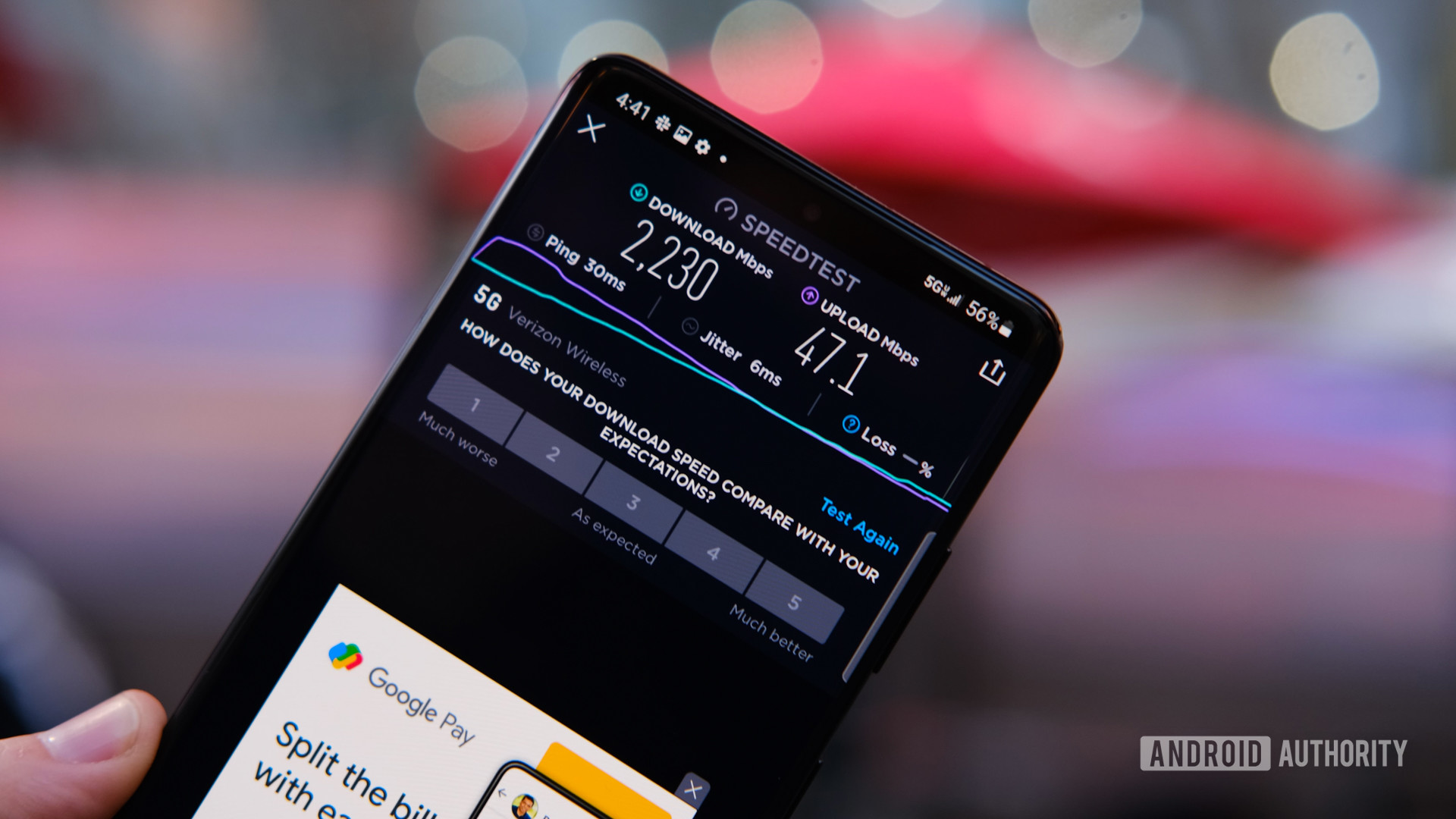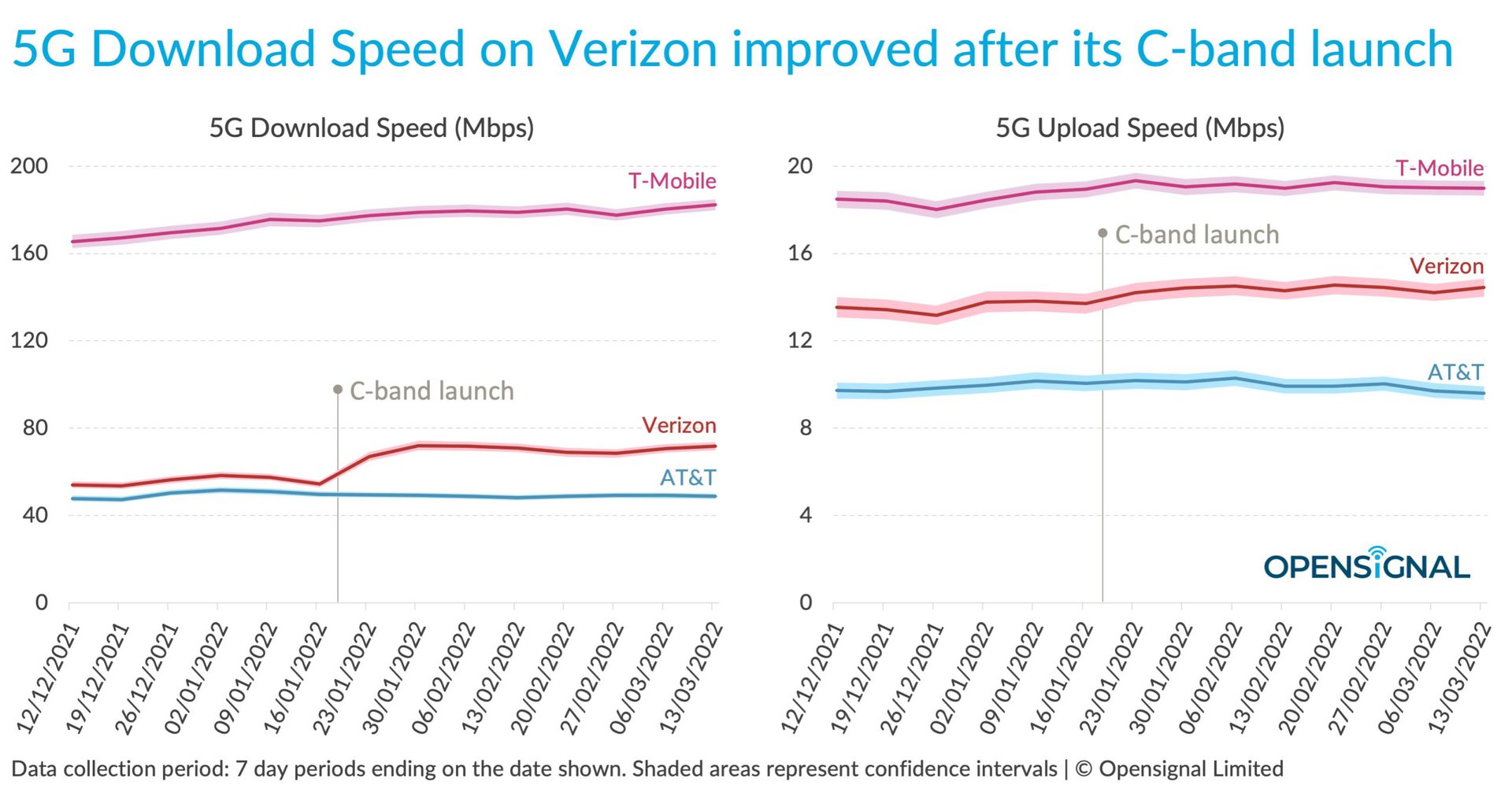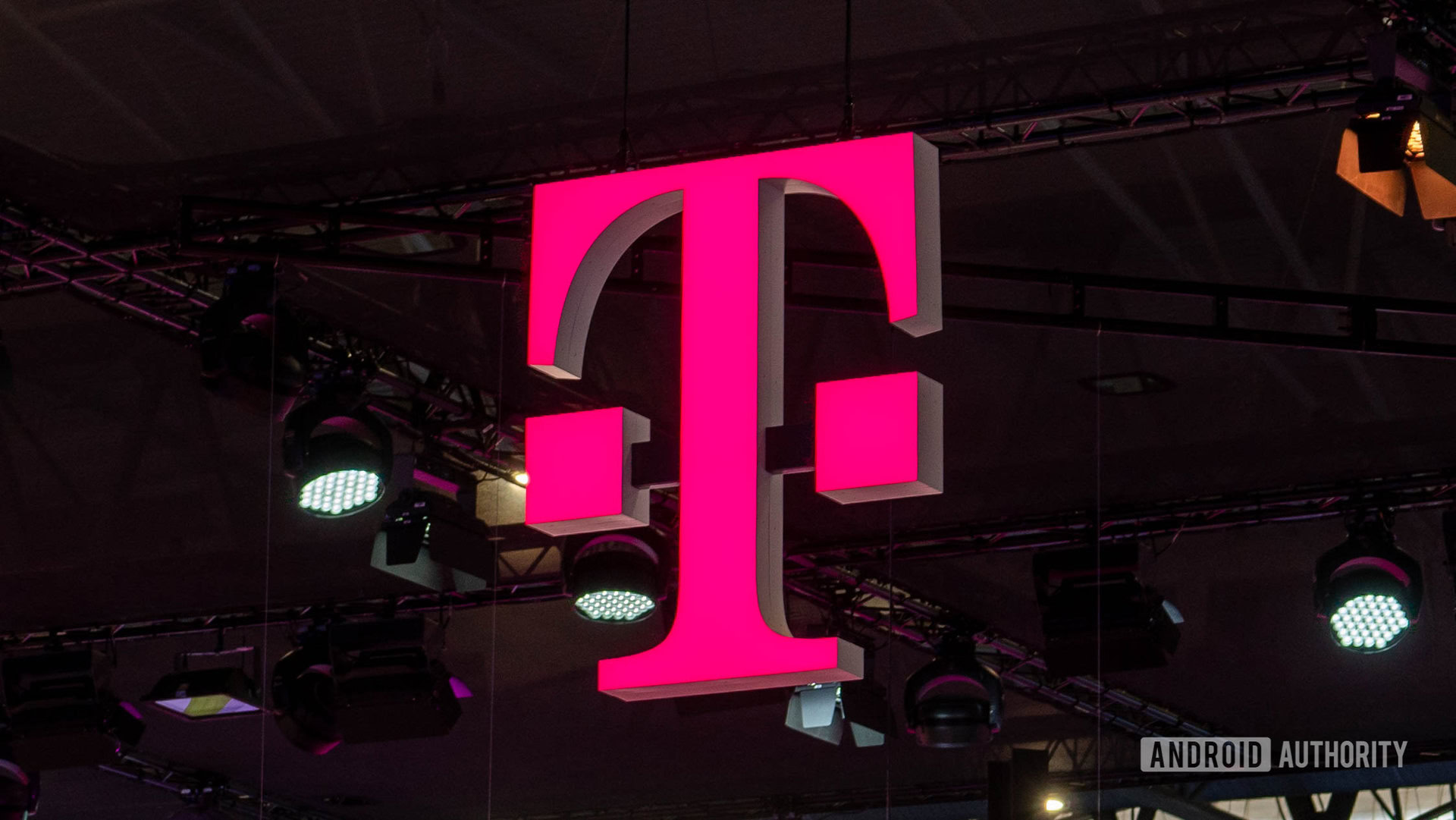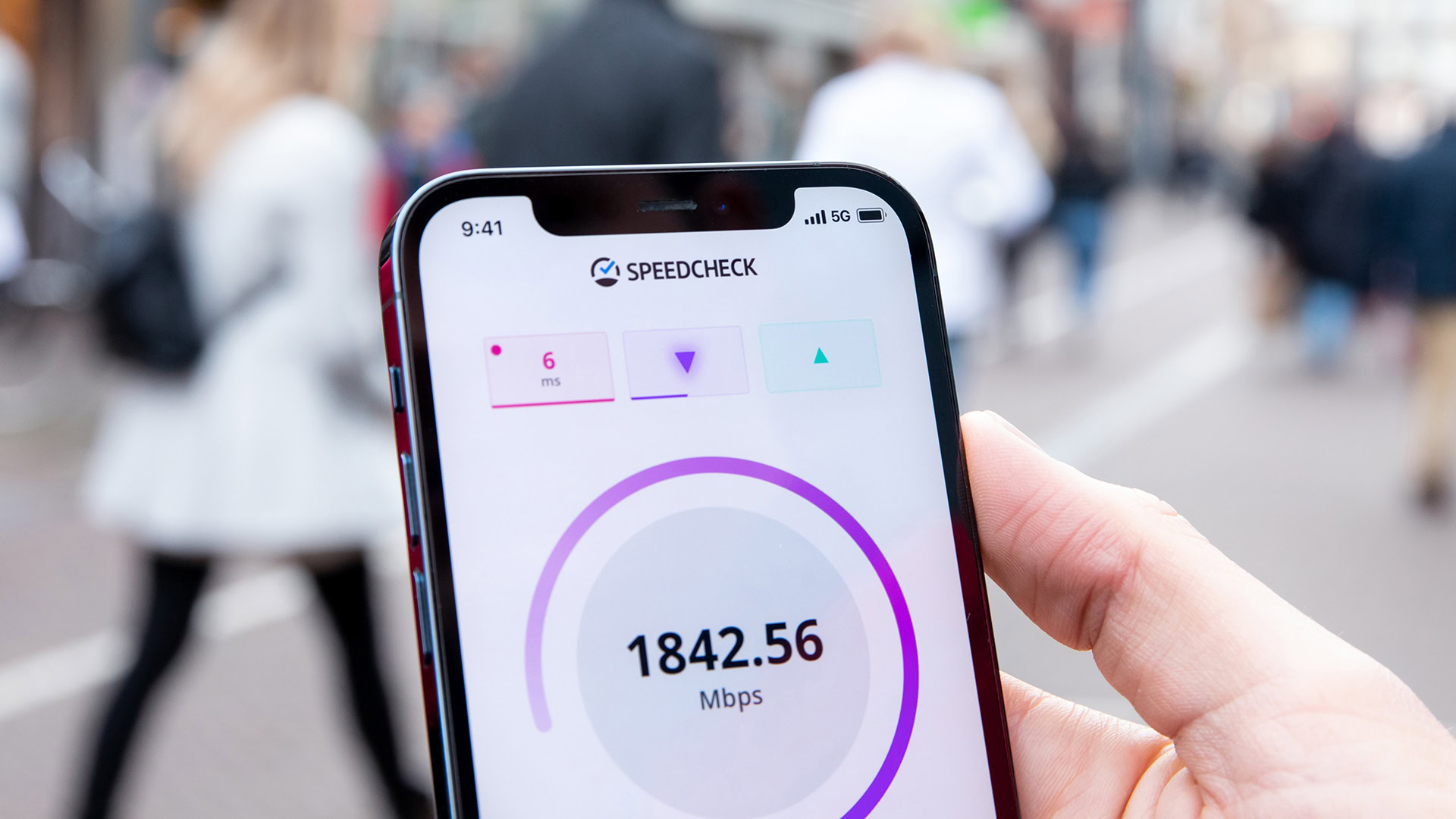Affiliate links on Android Authority may earn us a commission. Learn more.
How fast is 5G in the real world? Compared against 4G LTE

You may have heard a lot about 5G lately – the next generation of mobile network technology. According to carriers and smartphone makers, 5G has the potential to revolutionize the way we stay connected while on the go. But setting aside the hype for a moment, just how fast can 5G networks go in the real world, and how does it compare to the current 4G networks? Here’s everything you need to know.
Related: The best 5G plans in the US
The median 5G speed in the US hovers around 100 Mbps today, but that statistic improves with every passing month. T-Mobile is currently the fastest 5G carrier, with median speeds approaching 200 Mbps. If you don't see similar speeds, it's likely because you're connected to a low-band 5G network. Keep reading to learn more.
How fast is 5G?
Before we talk numbers, it’s worth understanding how 5G works and where the speed gains come from. In a nutshell, 5G uses more wireless spectrum than 4G, which allows for faster data transmission and increased capacity. The latter means you won’t find a 5G connection slow down in dense urban areas where 4G LTE would likely struggle. This also makes the former ideal for applications that require a lot of data, such as video streaming and cloud gaming.
Having said that, a 5G cell signal doesn’t always mean you’re getting the fastest possible connection. You see, the 5G wireless spectrum is divided into three distinct frequency bands — low-band, mid-band, and high-band. The highest frequencies (also referred to as mmWave) offer blazing-fast speeds that far surpass previous cellular generations. If you’ve ever witnessed or heard of 5G speeds in excess of 1Gbps, it was likely achieved on a mmWave network.
mmWave 5G doesn't penetrate obstacles like walls very well, but mid-Band 5G delivers a good mix of speed and range.
However, mmWave suffers from a few problems. Even setting aside the expensive infrastructure costs to deploy cutting-edge towers at scale, high frequencies do not penetrate obstacles very well. In the real world, your phone will likely struggle to maintain a mmWave connection indoors. And even if it doesn’t lose signal entirely, you’ll experience slower data transfers and higher latency.
To counter this problem, carriers typically deploy mmWave interspersed with low-band and mid-band networks. Low-band uses similar frequencies as 4G, which means you get reliable coverage regardless of whether you’re indoors or outdoors. Mid-band offers a healthy balance of performance and range, as we’ll discuss in the next section.
It’s worth noting that not all devices support mmWave 5G. Generally speaking, flagship smartphones from Google, Apple, and Samsung in the US do include the necessary hardware. But if you live outside the US or buy an unlocked device, you may not have (or even need) mmWave 5G connectivity.
See our list: The best 5G phones you can buy right now
5G speeds vs. 4G LTE speeds in numbers: Is one any faster?

Now that we know how the 5G spectrum works, it shouldn’t come as a surprise that you may experience huge fluctuations in download speeds from one network to another.
5G speeds above 100 Mbps have become increasingly common, but performance heavily depends on the frequency band and signal strength.
At the top end, for example, mmWave networks can deliver speeds above 1Gbps in the real world. While the theoretical limit is much higher at 10Gbps, your smartphone’s SoC and modem won’t be able to keep up. Moreover, any obstructions like tree cover can deteriorate signal quality and download speeds.
At the other end of the spectrum lies low-band 5G, which doesn’t have a lot of bandwidth but can easily cover several miles at once. Unsurprisingly, this is the slowest kind, so you can’t expect it to perform much faster than 4G — if at all.
Finally, we have mid-band 5G, which you may also find referred to as C-band in the US. It can offer speeds in the neighborhood of 100 to 900Mbps, plenty fast for most use cases. Most carriers around the world consider mid-band 5G as the perfect balance between speed and coverage. You don’t lose as much coverage as with mmWave, while still gaining speed over lower frequencies. C-band deployments have started to gain momentum in the US, so expect to see meaningful speed improvements in the near future.
According to tests conducted by OpenSignal, Verizon’s C-band boosted 5G speeds by around 25%. In the graph above, we observe a noticeable increase in Verizon’s average 5G download speeds once the carrier brought its C-band infrastructure online in early 2022. And when you look at mid-band 5G results alone, Verizon and T-Mobile consistently deliver download speeds of over 200Mbps.
Does carrier choice matter? Which US carrier has the fastest 5G speeds

In the US, T-Mobile currently holds a distinct lead over both Verizon and At&t in terms of 5G speeds. In the third quarter of 2022, Ookla found that T-Mobile scored the fastest median download speeds, nearly double that of Verizon. These results were also consistent with OpenSignal’s findings, which pegged T-Mobile’s median speeds at just over 170Mbps around the same time frame. Verizon and At&t should catch up in the future but currently lag behind T-Mobile by about 100Mbps.
Median 5G speeds hover around 100Mbps in the US, but you should expect better results in the near future.
Of course, not everyone needs the fastest network. Verizon’s 100Mbps median download speed will likely serve most customers’ needs today. Moreover, your location may yield different results than the above reports, depending on factors like the number of users and proximity to the nearest cell tower. The best way to find out which carrier offers the best 5G service for your needs is to take a look at their coverage maps, like this one from T-Mobile.
Finally, keep in mind that carriers sometimes use their own branding to refer to mid-band and mmWave frequencies. In the US, for example, Verizon uses the 5G Nationwide and 5G Ultra Wideband to differentiate between the two. Similarly, T-Mobile customers may notice a 5G UC label on their smartphone when connected to the carrier’s fastest 5G networks.
Read more: What does 5G UC mean?
How to measure 5G speeds on your phone
You can find out how well your 5G connection performs with a speed test. Simply open fast.com or speedtest.net in a web browser on your smartphone and run the test. You can also download an app from the Android Play Store or iOS App Store to accomplish the same thing. Make sure that you’re disconnected from Wi-Fi and that your phone is connected via a 5G signal.
As a rule of thumb, speeds above 100Mbps represent an upgrade over most 4G LTE networks. And if your phone manages to achieve gigabit speeds, you’ve likely connected to a mmWave or C-band network.
FAQs
5G networks operate in low, mid, and high band frequencies. The low band frequencies (below 1 GHz) have longer wavelengths and can penetrate walls and other obstacles more easily than higher frequencies. However, don’t expect speeds to be faster than 4G as low frequencies lack bandwidth and capacity.
It’s unfair to compare 5G and Wi-Fi as the speed will heavily depend on the underlying infrastructure. Typically, you can pay more each month for faster broadband (Wi-Fi) speeds, but you cannot control 5G network quality as you move from one place to another.
Cellular networks use low frequencies to maximize range. Since 5G uses higher frequencies to achieve increased capacity and blazing-fast speeds, you may actually notice better signal strength on older networks.
The blazing-fast 5G speed claims you’ve probably heard about don’t always hold up in indoor testing because high-band 5G frequencies are easily blocked by obstacles like walls. Even if you were well serviced by 5G towers around your house, you’ll still have to deal with monthly data caps, which are far higher (if not non-existent) in residential Wi-Fi connections. So can 5G replace Wi-Fi for good? Maybe in the future, but not anytime soon.
